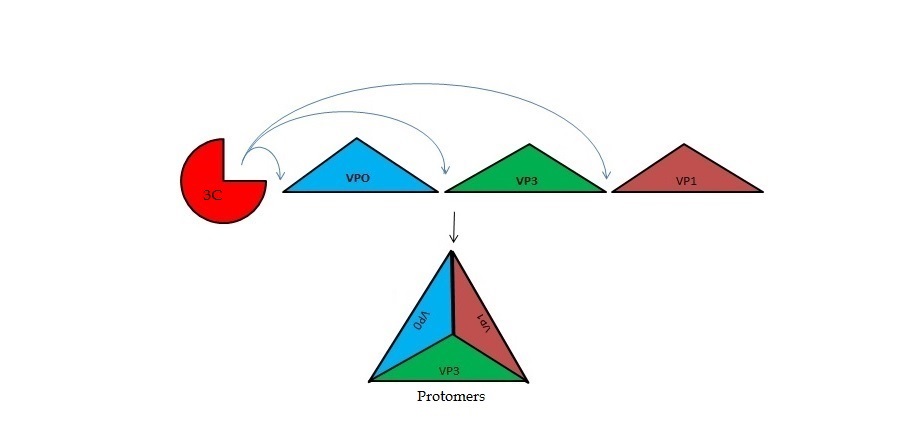Foot and Mouth Disease 3C Protease.
The viral RNA genome is translated as a single polypeptide precursor that must be cleaved into functional proteins by virally encoded proteases. The FMDV 3C protease is responsible for most cleavage in the viral polyprotein (10 out of the 13 cleavages) and has a conserved amino acid sequence across different viral strains, making the enzyme an attractive target for inhibitor design and antiviral drugs. The 3C protease cuts itself out of the polyprotein and is responsible for processing the P1 peptide (with exception of VP4-VP21 (1AB)) as well as P2 and P3, which has lead to its categorization as a catalytic triad. The kinetics of processing proceeds to cleave the bonds in this order of preference: VP3-VP1, VP0-VP3, and VP1-2A, where they then assemble into a triangular protomer (see figure below). Five protomers come together to make pentamers, twelve of which conjoin to complete the virus shell.

Function
FMDV 3C has multiple functions which will be discussed below:
Disease
Relevance
Vaccines against FMDV are used where the disease is endemic, however, vaccination is not permitted in many countries due to the potential risk for the escape of FMDV. Therefore, there has been interest in producing empty capsid particles for use of potential vaccines against FMD.
Unfortunately, there has been a number of challenges in this synthetic approach, due to 3C's toxicity to cells making it difficult to produce large amounts of processed capside proteins.
To solve this conundrum, different strategies must be analyzed to determine an optimal system for the production of FMDV empty capsid proteins with a limited amount of 3C protease that can stll process P1-2A, with out adverse expression effects. This can be
Structural highlights
Click " " to view by Group, and another to make of the protein.